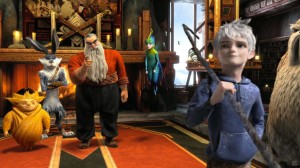Hijacking the Tooth Fairy
Posted on July 20, 2013 at 8:00 am
The tooth fairy is one of childhood’s most treasured myths, a lovely tribute to a bittersweet rite of passage that allows each family to create their own traditions. (Our tooth fairy left books.) There’s an awful movie with The Rock, a disappointing movie with Isla Fisher, and a pretty good assortment of books (my favorite is The Real Tooth Fairy), but until now no one has shamelessly exploited the legend of the tooth fairy for toys.
Susan Linn of the very worthy CCFC writes for the Huffington Post about a massive new marketing campaign for tooth fairy dolls. Watch this video — aimed at investors, not parents — with highlights of the marketing plan to get little girls hooked by “leveraging the brand” of a biological guarantee. It’s a “massive opportunity!”
Linn writes:
By harnessing the Tooth Fairy, The Royal Council of the Real Fairyland, LLC (also known as The Real Tooth Fairies, LLC), wants to “leverage and define this rite-of-passage moment” and literally profit from each tooth a child loses. The company is already selling VIP memberships, deluxe Real Tooth Fairy Collections, and more. Participation in Real Fairyland doesn’t come cheap. “Give your girl the gift of everything Tooth Fairy,” the website exhorts. A Real Tooth Fairies Birthday Party Collection costs $379.
…
Yanover pushes what the marketing industry calls an “immersive” Tooth Fairy experience, including a virtual world, toys, games, clothing, accessories — and a creepy “interactive” component where girls can “communicate” with their Tooth Fairies. Plans for licensing include, “toys, oral care, party & greeting card, & more.” According to the company, “This world was built for licensing; it’s a character that everybody already recognizes and is engaged with.”
The Real Tooth Fairies swaddles its product in virtue, claiming that its goal is to empower girls and promote kindness. But its target audience of girls as young as 5 are disempowered when a free-ranging, child-driven vision of Tooth-Fairyness is reduced to just six sexualized options, largely preoccupied with appearance, shopping, boyfriends –and leg hair! And it’s unkind to millions of girls, and the women they will become, that the “villain” in Real Fairyland, and the butt of its jokes, is a hairy-legged, buck-toothed, roly-poly, glasses-wearing fairy-wannabe. At present, the site’s target is mainly 5- to 10-year-old girls — but lest you’re wondering why boys have been left out of the marketing equation, they haven’t. Heavily-armed, superhero, Tooth-Fairy-counterparts are in development.
It is a shame that these people cannot support the imagination and empowerment of children rather than “leveraging” a character and, worst of all, turning her into just another perpetuation of the idea that appearance and buying things is all that matters. If you want to send a message that this is not appropriate, sign here.

